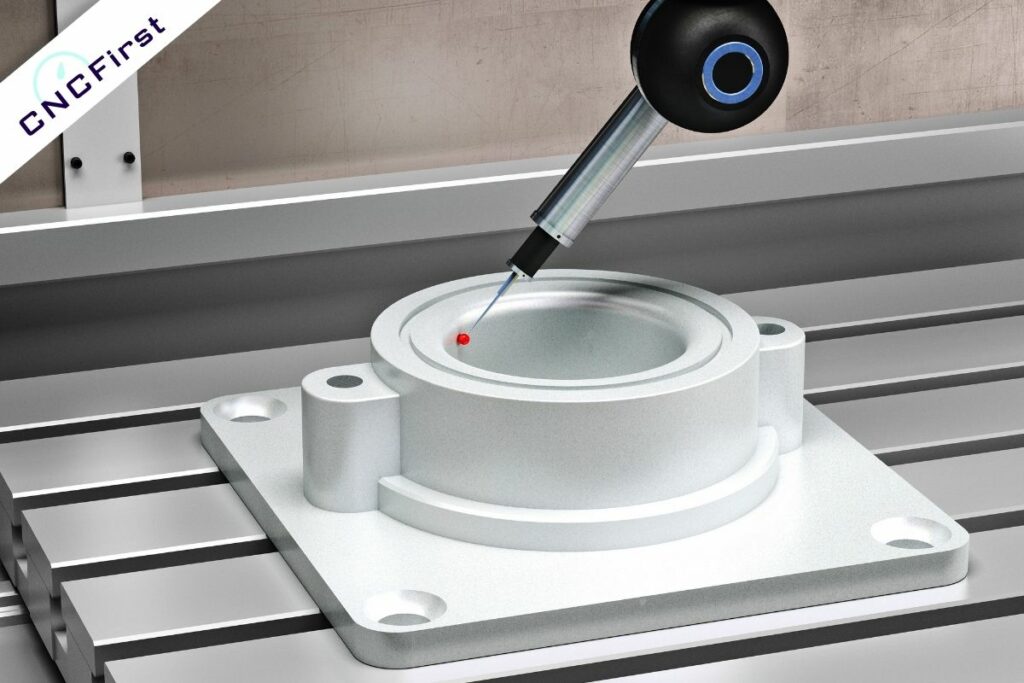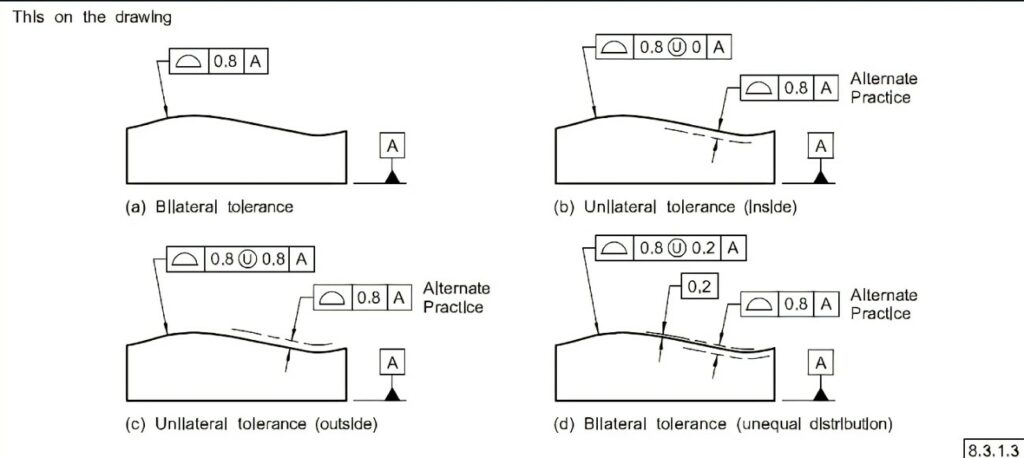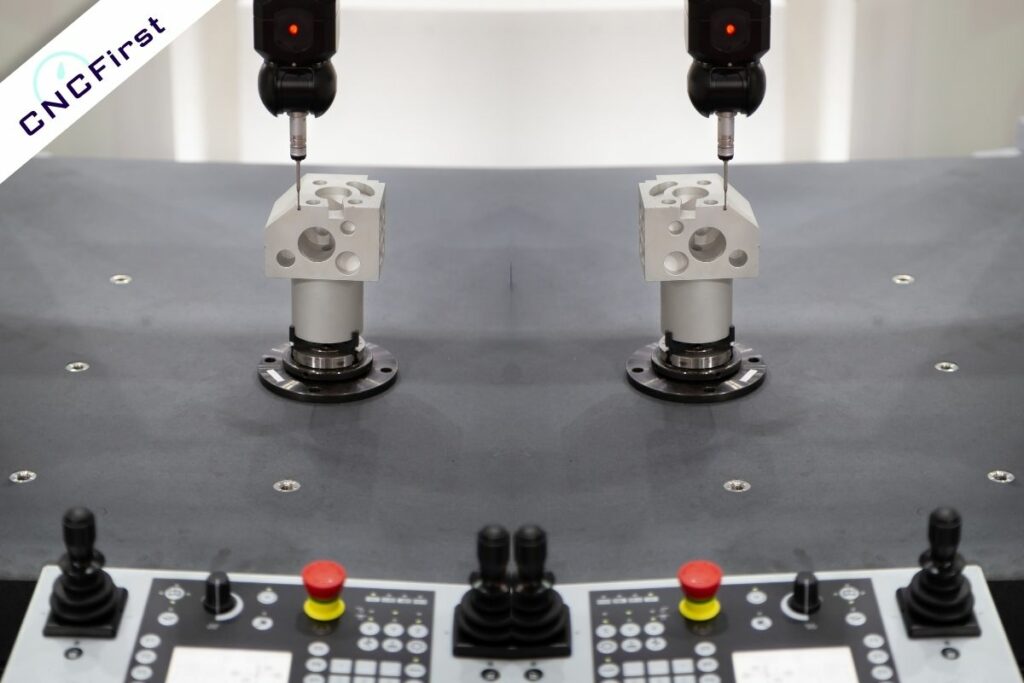
Parts with tight tolerances are essential for many products, but achieving these CNC machining tolerances can be a real challenge.
You can produce parts that meet your specifications with the right CNC machining tolerances guide. This guide will help you understand the various types of machining tolerances.
CNC Machining Tolerances : What Are They?
The CNC machining is a high-precision processing process. CNC machining tolerances are the acceptable limit on the deviation from the part’s nominal dimensions.
Plus, CNC machining tolerances are typically specified using the International Organization for Standardization (ISO) system or the American Society of Mechanical Engineers (ASME) system.
The ISO system is generally used for metric parts, while the ASME system is used for parts made in imperial units.
The tighter tolerance, the more costly the part will be to produce. Therefore, it is essential to specify only the tolerances necessary for proper function and assembly.
Why Is Tolerance Important In CNC Machining?
The tolerance for CNC precision machining is the allowable deviation from a specified dimension. Most CNC machining services meet their standard tolerances, usually approximately ± 0.005 inches (± 0.127 mm).
The tolerance determines how accurately a part must be machined, and it is crucial to select the correct tolerance for each application. If the tolerance is too tight, it may be impossible to achieve the required accuracy. The part may not function as intended if the tolerance is too loose.
First, CNC machining tolerance ensures that the finished product will function as intended. If a part is too small or too large, it may not fit properly or work correctly.
Second, CNC machining tolerance helps to ensure the safety of the finished product. If a part does not meet the specified tolerances, it could fail and cause injury or damage.
Finally, CNC machining tolerance helps to ensure that the finished product will meet aesthetic requirements. If a part does not meet the specified tolerances, it may not look as intended and could be rejected by the customer.

Five Types Of Tolerances In CNC Machining
Standard Tolerances
Standard machining tolerances are the acceptable limits for variation in the dimensions of a machined part. These tolerances are typically set by the engineer who designs the part, which can vary depending on the application’s requirements.
Unilateral Tolerances
A unilateral tolerance is a type of dimensional tolerance in which variations are only allowable in one direction. For example, if a part has a diameter of 2 inches, with a unilateral tolerance of +0.00/-0.01 inches, the actual diameter can be between 1.9 inches and 2 inches.
Unilateral tolerances are commonly used in components that have mating parts, such as screws and nuts. This is because it is often more important for the two parts to fit together snugly than for them to match each other perfectly.
Bilateral Tolerances
Bilateral tolerances are essential in engineering because they allow for variations in manufacturing while still ensuring that parts fit together correctly. When two parts are said to have a bilateral tolerance, it means that they can vary from each other by a certain amount and still be considered to be within specifications.
For example, if a part has a diameter of 2 inches, with a unilateral tolerance of +0.01/-0.01 inches, the actual diameter can be between 1.9 inches and 2.1 inches.

Geometric Dimensioning And Tolerancing(GD&T)
Geometric Dimensioning and Tolerancing (GD&T) is a system for providing instructions on how a part should be manufactured. It uses symbols and numbers to specify the tolerances, or allowed variations, for each part’s dimension.
GD&T is typically used in conjunction with engineering drawings, which provide a part’s overall dimensions and layout. The GD&T symbols are then used to specify the required tolerances for each dimension.
Although GD&T can initially seem complex, it is a very efficient way to communicate manufacturing information. Using a standard set of symbols and conventions, GD&T can help reduce confusion and ensure that parts are manufactured to the correct specifications.
Limit Tolerances
Engineers use limit tolerances to ensure that parts are within the proper tolerance range. A limit tolerance is the maximum and minimum values that a dimension can be without affecting the function of the part.
Limit tolerances are typically specified using upper and lower limits (UL and LL). For example, if a shaft has a UL of 0.5 inches and an LL of 0.45 inches, the shaft must be between 0.45 and 0.5 inches to function correctly. Any value outside of this range would result in a faulty part.
Things To Consider When Selecting Tolerances
Tight Tolerance Needs More Cost
Tight tolerance can also be time-consuming and expensive. In many cases, specialized equipment and skilled labor are required to meet the tight tolerances demanded by engineering projects.
Businesses that require tight tolerance engineering often need to budget for additional time and cost. While this can be challenging, the results are worth it, as tight tolerance engineering helps to ensure that products are safe and reliable.
Choose The Right Type of Materials
Soft materials are more likely to deform under high tolerances than harder materials. Plastics such as nylon, HDPE, and PEEK may not maintain as tight tolerances as steel or aluminum.
When machining plastic parts, it’s essential to know the CNC machining tolerance. This is because these materials tend to bend during processing, which can cause the finished part to be inaccurately sized.
To avoid this, it’s essential to use CNC machining services with different materials experience. These services will know how to consider the CNC machining tolerance when creating your parts, ensuring that they meet your specifications.
Inspection
Any machinist knows that tolerance is critical when creating parts. A slight mistake can mean the difference between a perfect fit and an unusable piece.
It is important to inspect any work for tolerance issues carefully. The tight tolerance needs a specific inspection to ensure that the finished product meets the necessary specifications. This can be done with various tools, including micrometers, calipers, and gauges.
It is possible to produce parts that meet the highest quality standards by performing a thorough inspection.
Some Terms About Tolerances
Basic size: Basic size is a term used in engineering to refer to the dimensions of an object that are used to define its size and shape.
Upper deviation: upper deviation is the maximum permissible deviation from the nominal value.
Lower deviation: upper deviation is the Minimum permissible deviation from the nominal value.
Total tolerance: the value that describes the maximum amount of variation.
Our Machining Capability

At our company, we specialize in machining high-tolerance parts using different CNC methods. We have a team of experienced engineers who are experts in this field, and we use the latest technology to ensure that our parts are of the highest quality.
Our machining process is completely fully automatic, and we offer fast turnaround time or high precision milling, lathe and surface finishes capabilities for the highest complex parts. Whether machining prototypes or producing parts, we have all of your CNC milling and turning services.
We work closely with clients to understand their specific needs, and we always go the extra mile to ensure they are satisfied with our work. If you need a partner who can provide you with the best possible results, we would be happy to discuss your project. In summary, we will support your project, from prototyping to production, regardless of the tolerance requirements.
Conclusion
We do hope that this guide has helped you have a better understanding of what CNC machining tolerance is and how it affects the manufacturing process.
If you have any further questions, please don’t hesitate to contact us. Our team would be glad to help you out in any way possible. Also, be sure to check out our homepage for more information on our company and machining services. Thank you for reading!





